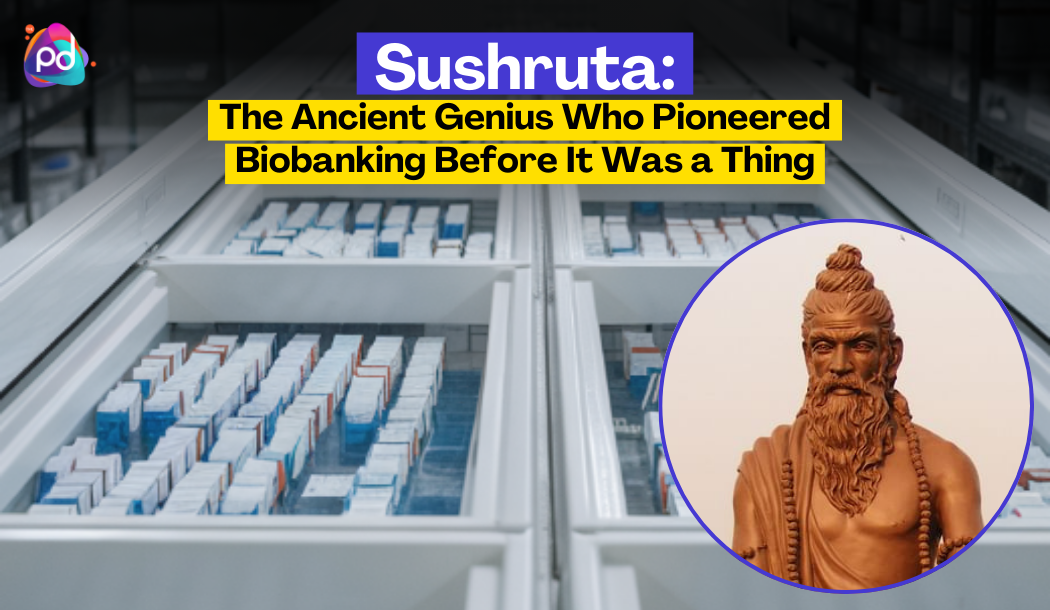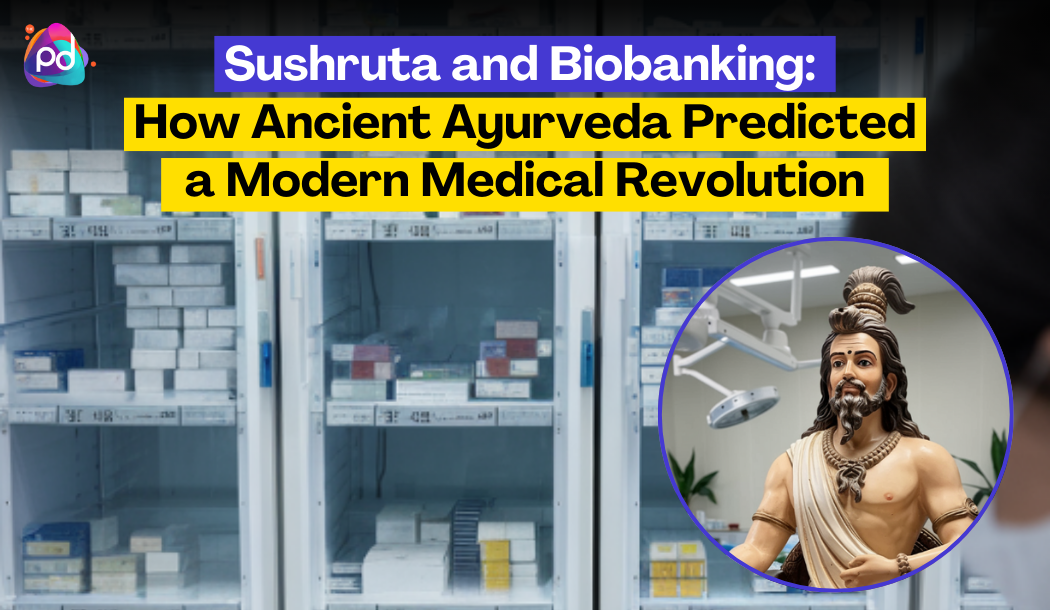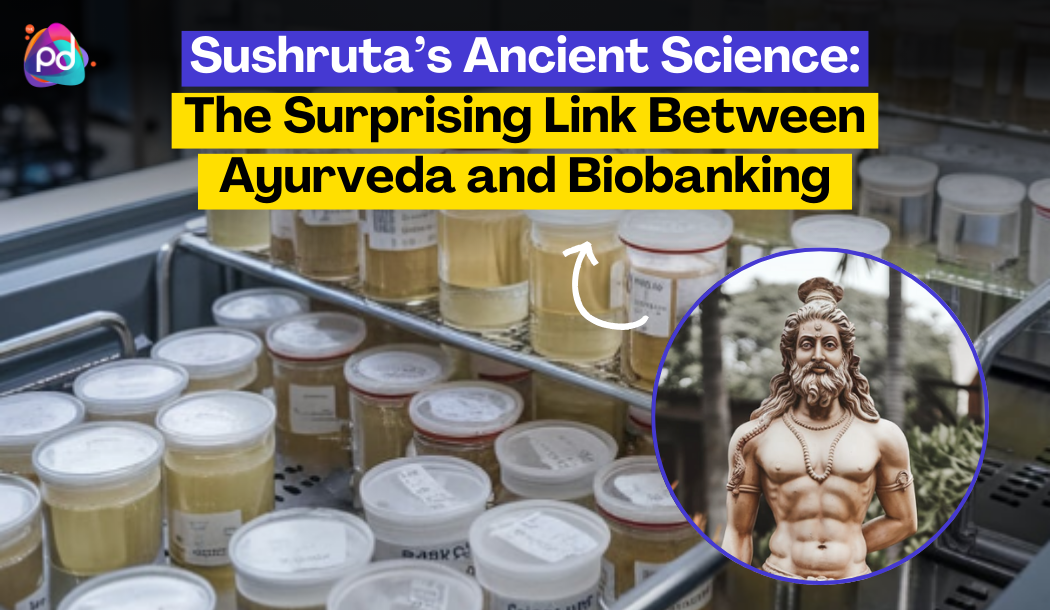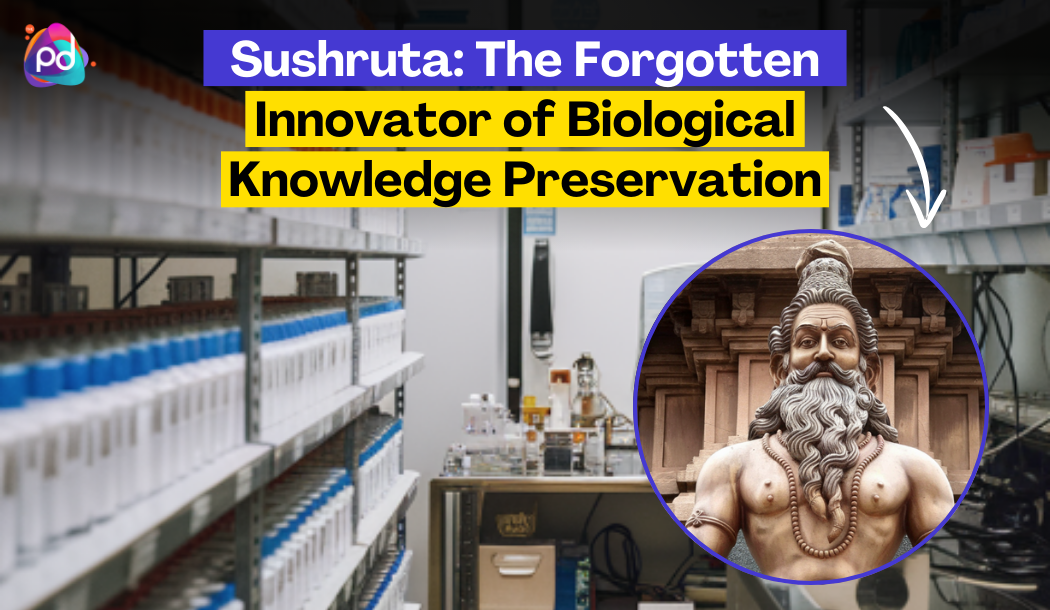Sushruta: The Ancient Pioneer Who Pioneered Biobanking Before It Was a Thing
Biobanking, the systematic collection, storage, and management of biological samples for research and healthcare, is often regarded as a product of modern scientific advancements. However, the seeds of biobanking can be traced back thousands of years to Sushruta, the ancient Indian physician whose groundbreaking work in medicine and surgery laid the foundation for practices that resonate with biobanking principles today.
Sushruta, often referred to as the Father of Surgery, demonstrated a profound understanding of preserving biological samples, ethical practices, and meticulous documentation—key aspects of modern biobanking. In this blog, we explore how Sushruta’s ancient innovations connect to today’s advanced biobanking systems.
Who Was Sushruta?
Sushruta was an ancient Indian physician and author of the Sushruta Samhita, a seminal text on medicine and surgery dating back to around 600 BCE. His contributions to the medical field, particularly in surgery, anatomy, and the preservation of biological materials, are unparalleled.
While biobanking as a term didn’t exist in Sushruta’s time, his practices mirrored its core principles, making him a true pioneer of the concept long before it was formally recognized.
Sushruta’s Biobanking Principles
1. Preservation of Biological Materials
Sushruta’s detailed instructions on preserving human cadavers and biological tissues for educational and research purposes highlight his advanced understanding of maintaining sample quality. He believed that preserved biological materials could serve as invaluable tools for studying anatomy and surgical techniques, much like modern biobanks provide high-quality biospecimens for research today.
2. Ethical Use of Samples
Ethics was a cornerstone of Sushruta’s medical philosophy. He emphasized obtaining consent and using biological samples responsibly. This aligns with the ethical frameworks of contemporary biobanking, which prioritize informed consent, transparency, and respect for donor rights.
3. Detailed Documentation
The Sushruta Samhita meticulously records surgical techniques, patient case studies, and outcomes, akin to how modern biobanks annotate biological samples with clinical and demographic data. Sushruta’s approach to documentation ensured that knowledge could be shared and applied effectively—a principle that drives biobanking research today.
How Sushruta’s Innovations Connect to Modern Biobanking
1. Sample Integrity
Sushruta’s preservation techniques echo the modern focus on maintaining biospecimen integrity through advanced storage solutions like cryopreservation. His methods ensured the longevity of biological materials for study and research.
2. Global Collaboration
Although Sushruta’s practices were localized, his emphasis on sharing medical knowledge and techniques parallels the collaborative spirit of today’s biobanking systems, which enable global research partnerships.
3. Advancing Medical Research
Just as biobanks accelerate discoveries in genomics, cancer research, and personalized medicine, Sushruta’s preserved samples enabled his students to learn surgical procedures, advance their skills, and contribute to the evolution of healthcare.
Sushruta’s Broader Contributions to Medicine
While Sushruta’s connection to biobanking is a remarkable aspect of his legacy, his contributions to the medical field were vast:
- Innovator of Surgical Techniques: Sushruta documented over 300 surgical procedures and introduced the use of more than 120 surgical instruments.
- Plastic and Reconstructive Surgery: His pioneering work in rhinoplasty (nose reconstruction) remains a testament to his ingenuity.
- Cadaver Dissection: Sushruta was one of the first physicians to emphasize the study of human anatomy through cadaver dissection, setting a standard for medical education.
- Holistic Medicine: His understanding of balancing the body’s doshas (humors) integrated physical and mental well-being into his treatments, an approach that aligns with modern holistic healthcare.
The Legacy of Sushruta in Modern Biobanking
Sushruta’s principles—preservation, ethics, and documentation—serve as the foundation for modern biobanking. Today, biobanks play a critical role in:
- Advancing Personalized Medicine: Providing biospecimens for research into targeted therapies.
- Rare Disease Research: Offering invaluable samples to accelerate the understanding of rare conditions.
- Pandemic Preparedness: Supporting the development of vaccines and treatments during global health crises.
As biobanking evolves with technologies like AI, blockchain, and automation, Sushruta’s ancient practices remind us of the timeless value of these core principles.
The Future of Biobanking: Honoring Sushruta’s Vision
The field of biobanking continues to expand, enabling breakthroughs in genomics, cancer research, and more. As we adopt advanced systems for storing and analyzing biological materials, the vision of pioneers like Sushruta reminds us of the importance of ethics, precision, and knowledge sharing in advancing healthcare.
At Vigisolvo, we build upon this ancient legacy by offering cutting-edge biobanking solutions designed to meet the challenges of modern research.
Conclusion
Sushruta’s innovative practices laid the groundwork for the principles we now associate with modern biobanking. His contributions to medicine, ethics, and the preservation of biological materials remain an inspiration for researchers and practitioners worldwide.
As we celebrate the advancements of biobanking in the 21st century, we also honor the legacy of Sushruta: the ancient pioneer who pioneered biobanking before it was a thing.
Contact Vigisolvo today to discover how our biobanking solutions can support your research and innovation.




